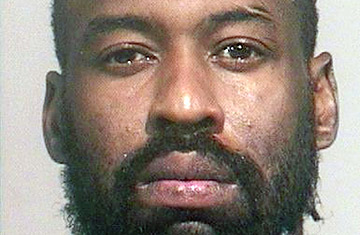
Federal agents in Florida arrested Brown on April 1, 2008, who was acting suspiciously as he boarded a flight to Montego Bay, Jamaica. Upon searching his baggage, apparent bomb-making materials were found.
Was an alleged attempt to smuggle explosive material onto a plane prevented by a lucky guess? Or was there some science at work?
On Tuesday, something about 32-year-old Kevin Brown caught the attention of an Orlando International Airport security officer, who tagged the Jamaican national's checked luggage for a full inspection. As it turned out, Brown's bag was stuffed with what the FBI is calling bomb-making material and instructions for making a bomb out of such materials.
Transportation Security Administration (TSA) officials say Brown's arrest was not a stroke of luck: the officer who tagged Brown was trained in reading body language and behavior detection, specifically in sensing micro-expressions on a person's face. On Tuesday at Orlando, the first security officer to see Brown found his behavior "immediately suspicious," said TSA spokesman Christopher White. White said that Brown continued to act suspiciously while he was watched for the next 30 minutes.
Neither the FBI nor the Transportation Security Administration specifies exactly what that suspicious behavior consisted of. But the science of reading "micro-expressions" is becoming more sophisticated. "In micro-expression, something is on and off the face in about 1/30th of a second. So it's very, very rapid," says Dr. Maureen O'Sullivan, who trains U.S. airport security officers in recognizing them in order to spot potential troublemakers, including terrorists. Since the summer of 2007, O'Sullivan, working with micro-expression detection pioneer Paul Ekman, has helped train thousands of airport security officers in techniques to detect the kind of involuntary physical and physiological actions — both body language and verbal expressions — that people exhibit when trying to hide something.
For example, three muscles control the human eyebrow, shaping that portion of the face into an exponential number of expressions. Feeling distressed? Those muscles unconsciously knit the brows together and upward, pulling the eyes up at the inner corner. Think of that classic vision of perpetual existential angst, Woody Allen. It's a facial expression that O'Sullivan says can be performed by skilled actors like Allen. But, she says, "for most people when that [expression occurs], they're feeling distressed, and most people cannot make that movement voluntarily. So if you can't make it voluntarily then it's going to be impossible for you to prevent it because you're not aware of how to move those muscles, how to cause it or suppress it."
Was Brown betraying anxiety over his luggage? According to FBI agent Kelly Boaz's affidavit in federal court, Brown variously told the FBI that he planned to bomb a tree stump back home in Jamaica and that he wanted to show friends how to build explosive devices like the ones he saw while he says he was in the U.S. military in Iraq. Initial record checks by the FBI indicate Brown was in the U.S. legally, but have not yet confirmed that he was a military veteran. Brown has been charged with knowingly and willfully attempting to place or attempt to have placed on an aircraft an explosive or incendiary device. His lawyer has made no comment.
TSA's White says 1,000 trained officers are deployed in more than 40 airports with the number expected to double in a year. Since the behavior detection program went national in 2006, White said 102,914 travelers have been tagged for further screening; 9,142 have been referred to a law enforcement agency; 682 people have been arrested and another 925 remain under investigation. Many of those arrested have been charged with drug or currency smuggling or immigration violations. As the numbers show, behavior detection remains an art, not a science. "I can see them pulling Woody Allen out of a line in an airport if he looked really distressed and they didn't know who he is," Sullivan said. "Everyone's going to look somewhat distressed in an airport so you're going to get some false positives."
